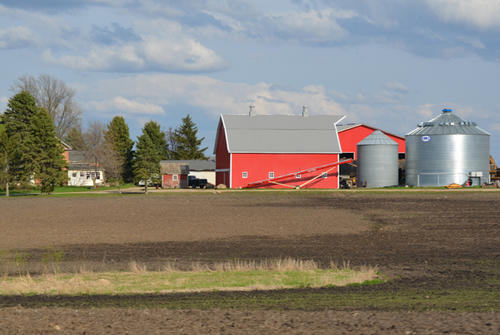
Minnesota’s farmers and landowners alike are facing difficult decisions about farmland rental rates for the 2020 growing season.
According to the most recent University of Minnesota figures, statewide rental rates declined 1.6% between 2017 and 2018, putting pressure on landlords’ bottom lines. At the same time, commodity prices for corn and soybean have plummeted, making farmland rental costs an important factor for farmers and their profit margins.
University of Minnesota Extension Educators David Bau and Nathan Hulinsky are hosting workshops around Minnesota to help farmers, landlords and agriculture professionals determine fair farmland rental rates for all parties. Bau and Hulinsky, educators on the Ag Business Management team, are able to discuss the impact of rental rates on Minnesota farmers and landlords.
David Bau
“Farmland rents are the largest input cost for both corn and soybean farmers, and they have not come down as quickly as commodity prices have. Southern Minnesota farmers have, on average, incurred losses on corn for six years in a row, while soybeans have at least broken even, or generated a small profit, during this time. The arithmetic is difficult for farmers: high rental rates combined with low commodity prices means slim margins at the end of the year. Accordingly, many farmers are experiencing persistent financial issues after consecutive years of losses. Given the financial issues facing farm country, our workshops are designed to help both farmers and landlords determine what they think is a fair farmland rental rate.”
Contact information:
David Bau
[email protected]
507-360-0664 (c)
Nathan Hulinsky
“Deciding on a fair rental price is vital for both the farmer and the landowner. For farmers, rent comprises about 25% to 30% of crop expenses. Landowners, meanwhile, have an opportunity cost of owning farmland: they could do other things with their land rather than rent it out. Our goal is to help farmers determine their land rental budget, and help landowners calculate what they can receive based on the value of their farmland and costs associated with it. Farmland rental rates are not commonly talked about in public. It’s important for farmers and landlords to consider rental rate trends, the current economic picture for corn and soybean production, commodity prices, farmland values and more as they go through this process. University of Minnesota Extension has these resources available.”
Contact information:
Nathan Hulinsky
[email protected]
320-874-0459 (c)
David Bau has been with Extension for over 20 years. His work focuses on agricultural economics, crop budgets, the farm bill, cropland rental rates, farm transfer and estate planning, grain marketing and working with marketing groups.
Nathan Hulinsky is a regional Extension Educator, focused on land rent, farm transfer, dairy risk management, financial management and employee management. He has been with University of Minnesota Extension since 2016, based in the St. Cloud Regional Office.
- Categories:
- Agriculture and Environment





